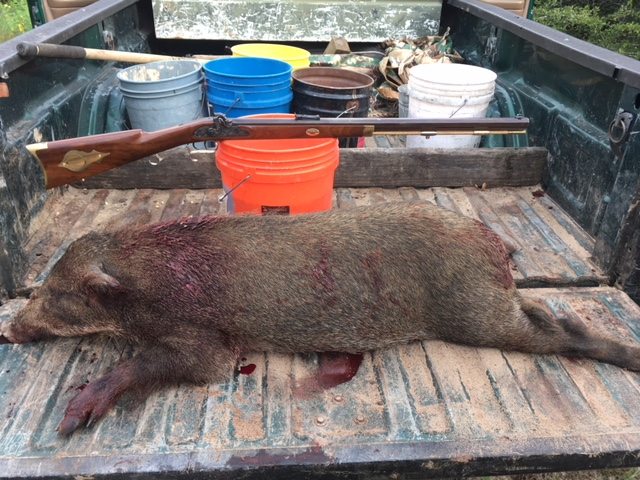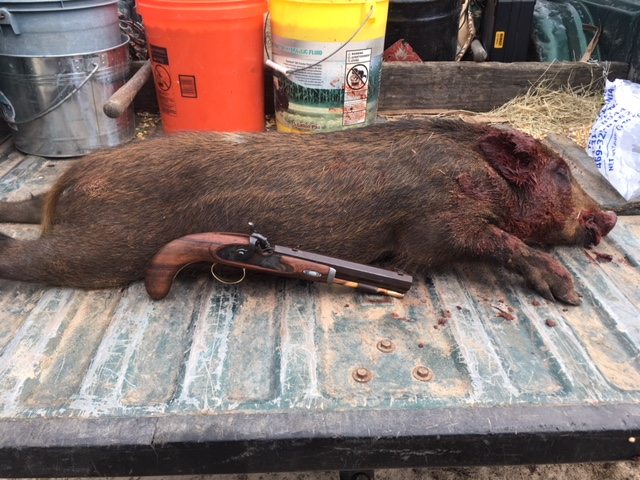The .62 rifle was finally shot and sighted in. Thank you for all the excellent advice on loads.
It was not harsh or painful to fire…but it’s no shrinking violet, either. It’s quite a roar. Mark Wheland did an outstanding job fitting that unusual butt plate to my shoulder, along with lining up my cheek on the cheek rest. Everything locks in tight, so the detonation is not at all jarring or heavy. It’s just a good shove.
Here below is the target used to sight in the .62 rifle. Four shots total. Good job on the windage, Wheland! He had that right on “dead nuts.” No drifting sights was needed.
Going on gut instinct and the advice of a number of online personalities here, I started and finished at 105 grains of Swiss FFG. With a standard blue and white pillow ticking patch at 0.013” thickness and lubricated with bear oil, and a 335-grain .605” soft lead ball, the charge was easy enough to load in the .615” bore. The only things requiring adjustment were my anti-flinch mechanism (shot 1), and the rear sight (shots 2-3). I’ll shoot it at 100 yards next, and it may require the rear sight to be pushed all the way back. It may not, too, because as can be seen, the ball hits exactly at point of aim at 70 yards, and is likely to maintain this trajectory another 30 yards.
I am very happy with the Colerain barrel that Scott cut to order, too. The long, slow twist and shallow grooves make this an accurate rifle that is also easy to clean.


It was not harsh or painful to fire…but it’s no shrinking violet, either. It’s quite a roar. Mark Wheland did an outstanding job fitting that unusual butt plate to my shoulder, along with lining up my cheek on the cheek rest. Everything locks in tight, so the detonation is not at all jarring or heavy. It’s just a good shove.
Here below is the target used to sight in the .62 rifle. Four shots total. Good job on the windage, Wheland! He had that right on “dead nuts.” No drifting sights was needed.
Going on gut instinct and the advice of a number of online personalities here, I started and finished at 105 grains of Swiss FFG. With a standard blue and white pillow ticking patch at 0.013” thickness and lubricated with bear oil, and a 335-grain .605” soft lead ball, the charge was easy enough to load in the .615” bore. The only things requiring adjustment were my anti-flinch mechanism (shot 1), and the rear sight (shots 2-3). I’ll shoot it at 100 yards next, and it may require the rear sight to be pushed all the way back. It may not, too, because as can be seen, the ball hits exactly at point of aim at 70 yards, and is likely to maintain this trajectory another 30 yards.
I am very happy with the Colerain barrel that Scott cut to order, too. The long, slow twist and shallow grooves make this an accurate rifle that is also easy to clean.










